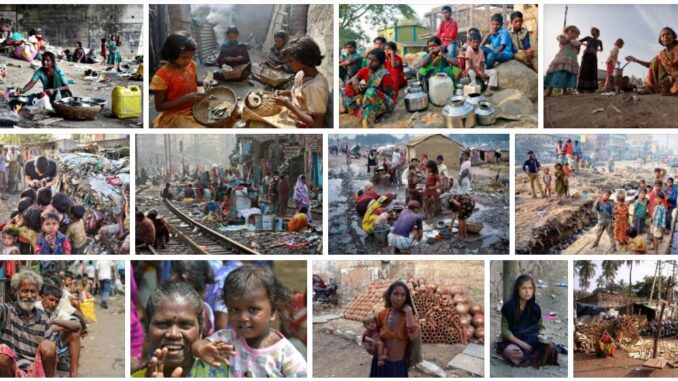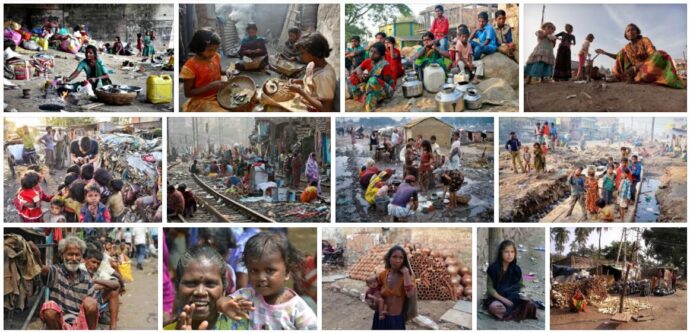
Poverty and inequality
India has been committed to fighting poverty since independence. Jawaharlal Nehru – the first Prime Minister – believed that poverty could be eradicated through managed development (in the form of five-year plans) in a semi-socialist economic system. However, the few successes of this policy were essentially wiped out by the rapid population growth and the resulting new social challenges.
According to Shopareview.com, the poverty rate in India has fallen continuously since independence – especially in the last few decades. However, India is still characterized by extreme poverty and extreme inequality of life opportunities: Around a quarter of all Indians live below the international poverty line of USD 1.25 per day – which corresponds to around 1/3 of the world’s poor – and around 60 percent on less than $ 2 a day. But poverty is also regionally and unevenly distributed between social groups. A majority of the poor live in rural areas and come from minorities (mostly Dalits, Adivasi and Muslims).
Inequality has increased since the economy was liberalized in 1991. On the one hand, this is due to the increase in inequality between urban and rural areas and also to the fact that some sections of the population have benefited disproportionately from the liberalization of the economy.
With regard to a number of social indicators (e.g. child mortality), India often does worse than its poorer neighbors in regional terms. In no other country are more people starving than in India. In the current World Hunger Index, which was published in 2019 by Welthungerhilfe in Bonn and Concern Worldwide Dublin, India ranks 102 out of 117, on a par with countries like Niger, Sierra Leone and Uganda. The situation in India is classified as “serious”.
The first results of the current National Health and Family Survey for 2015/16 show that around 40% of children under 5 are too small for their age and around a third too light. Around 23 percent of women between 15 and 49 also have a body mass index that is too low, and even half of all pregnant women suffer from anemia.
The current Human Development Report lists India in 130th position. Although the index value has risen in recent years, the values on income, education and life expectancy clearly show that the emerging economic power India still has many hurdles to overcome before one can speak of prosperity that encompasses the masses. This is also due to the largely unsuccessful poverty reduction programs.
The reasons for the ineffective and largely inefficient poverty reduction programs are diverse: Since independence, a large number of programs have been introduced at the central and state levels, which has led to a fragmentation of the programs, many of which are chronically underfunded. Furthermore, poor target group selection and orientation, high leakage losses due to corruption, political influence, cumbersome bureaucracy and mismanagement have negatively affected the effectiveness of the programs.
The aim and focus of poverty reduction was traditionally set in the five-year plans. In the eleventh five-year plan (2007-2012), in addition to the well-known priorities such as integrated measures in the areas of education and health, vocational training, loans and infrastructure measures and the establishment of social security systems and land reforms, the existing differences in development (“Bridging Divides. Including the Excluded “) and ways of overcoming them are discussed. In the twelfth Five-Year Plan (2012-2017), these topics are also present again, with the main focus on rapid, sustainable and inclusive growth. It also outlines measures in the main economic and social sectors. Under Narendra Modi, the creation of five-year plans was discontinued and the responsible planning commission was dissolved, which has been replaced by a think tank (NITI Aayog) since 2015.
Current social policy
So far, three general tendencies can be identified in current social policy. Firstly, the government is essentially continuing or expanding the existing social programs initiated by the Congress Party (e.g. the Mahatma Gandhi National Rural Employment Guarantee Scheme, MGNREGS) or expanding them (“Housing for all by 2020”). Second, the government tries to make existing and new programs more transparent, more efficient and more corruption-free (e.g. through digitized administration). Thirdly, new programs have been launched under Modi, especially the so-called Jan Dhan Aadhaar Mobile-Program (JAM), which among other things aims at financial inclusion and social protection of the poor It includes the free opening of bank accounts for everyone, a mobile phone-based payment model and, above all, a biometric identity card – the Aadhaar card – with an individual identification number (which, however, was already brought into being under the previous government). The JAM program offers the chance to reduce poverty in Indein, as it already covers most of the Indians (approx. 93% of the population) and enables a faster and more targeted transfer of benefits. It also includes contribution-based life and accident insurance and a pension. Considerations are currently being discussed, all subsidy programs (such as the Public Distribution System- PDS) to be replaced by direct payments. JAM also makes this possible.
In 2018, the BJP government under Modi presented what it claims to be the world’s largest government-financed health program, which aims to protect a large number of families at risk of poverty and improve the quality of the existing health system. A similar undertaking was announced in the 2016 budget, but never achieved the goals set.
